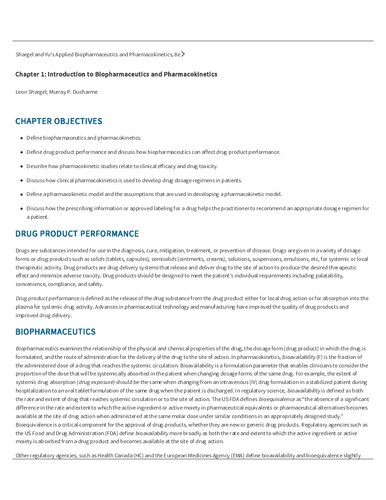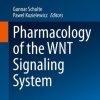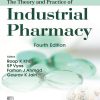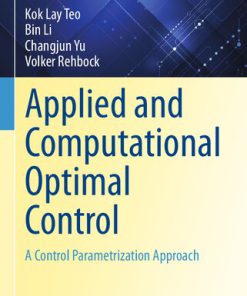Shargel and Yu Applied Biopharmaceutics and Pharmacokinetics 8th Edition by Andrew Yu, Murray Ducharme, Leon Shargel ISBN 9781260143003 1260143007
$50.00 Original price was: $50.00.$25.00Current price is: $25.00.
Shargel and Yu Applied Biopharmaceutics and Pharmacokinetics 8th Edition by Andrew Yu, Murray Ducharme, Leon Shargel – Ebook PDF Instant Download/Delivery: 9781260143003 ,1260143007
Full download Shargel and Yu Applied Biopharmaceutics and Pharmacokinetics 8th Edition after payment
Product details:
ISBN 10: 1260143007
ISBN 13: 9781260143003
Author: Andrew Yu, Murray Ducharme, Leon Shargel
Shargel and Yu Applied Biopharmaceutics and Pharmacokinetics 8th Edition Table of contents:
PART I. Introduction to Biopharmaceutics and Pharmacokinetics
Chapter 1. Introduction to Biopharmaceutics and Pharmacokinetics
Drug Product Performance
Biopharmaceutics
Pharmacokinetics
Pharmacodynamics
Clinical Pharmacokinetics
Drug Exposure and Drug Response
Toxicokinetics and Clinical Toxicology
Measurement of Drug Concentrations
Pharmacokinetic Models
Computers in Pharmacokinetics
Chapter Summary
Learning Questions
Answers
References
Bibliography
Chapter 2. Mathematical Fundamentals in Pharmacokinetics
Calculus
Graphs
Practice Problem
Mathematical Expressions and Units
Units for Expressing Blood Concentrations
Measurement and Use of Significant Figures
Practice Problem
Practice Problem
Rates and Orders of Processes
Chapter Summary
Learning Questions
Answers
References
Chapter 3. Biostatistics
Variables
Types of Data (Nonparametric Versus Parametric)
Distributions
Measures of Central Tendency
Measures of Variability
Hypothesis Testing
Statistically Versus Clinically Significant Differences
Clinical Case
Statistical Inference Techniques in Hypothesis Testing for Parametric Data
Goodness of Fit
Statistical Inference Techniques for Hypothesis Testing with Nonparametric Data
Controlled Versus Uncontrolled Studies
Blinding
Confounding
Validity
Bioequivalence Studies
Evaluation of Risk for Clinical Studies
Chapter Summary
Learning Questions
Answers
References
PART II. Fundamentals of Biopharmaceutics
Chapter 4. Physiologic Factors Related to Drug Absorption
Drug Absorption and Design of a Drug Product
Route of Drug Administration
Nature of Cell Membranes
Passage of Drugs across Cell Membranes
Drug Interactions in the Gastrointestinal Tract
Oral Drug Absorption
Oral Drug Absorption during Drug Product Development
Methods for Studying Factors That Affect Drug Absorption
Effect of Disease States on Drug Absorption
Miscellaneous Routes of Drug Administration
Chapter Summary
Learning Questions
Answers
References
Bibliography
Chapter 5. Drug Distribution and Protein Binding
Introduction
How Does a Drug Interact with the Various Constituents in Blood?
How Does Drug Move from Blood into Tissues?
What Determines the Rate and Extent of Drug Distribution into Various Tissues?
How Do Membrane Transporters Influence Drug Distribution?
Do Drugs Distribute into Breast Milk?
Practice Problem
How Is the Extent of Drug Distribution in the Body Measured?
What Is the Effect of Plasma Protein Binding and Tissue Binding on Drug Distribution?
Practice Problem
How Is the Extent of Drug−Protein Binding Measured?
Practice Problem
How Are the Kinetics of Drug−Protein Binding Measured?
Practice Problems
How Are Binding Constants and Binding Sites Determined Experimentally?
What Are the Primary Plasma Proteins to Which Drugs Bind?
How Do Drug−Drug Protein Binding Interactions Influence Drug Distribution and Effect?
Chapter Summary
References
Chapter 6. Physiology of Drug Elimination
Introduction
Anatomy and Physiology of the Liver
Hepatic Enzymes Involved in the Biotransformation of Drugs
Drug Biotransformation Reactions
Pathways of Drug Biotransformation
Drug Interaction Example
Clinical Example
First-Pass Effects
Biliary Excretion of Drugs
Clinical Example
Role of Transporters in the Elimination of Drugs from the Liver
The Kidney and Renal Elimination
Practice Problems
Chapter Summary
Learning Questions
Answers
References
Bibliography
Chapter 7. Biopharmaceutic Considerations in Drug Product Design and In Vitro Drug Product Performance
Introduction
Biopharmaceutic Factors and Rationale for Drug Product Design
Rate-Limiting Steps in Drug Absorption
Physicochemical Properties of the Drug
Influence of Excipients on Drug Product Performance
Evaluation of Drug Product Performance
Considerations in the Design and Performance of Drug Products
Examples Related to the Design and Perfomance of Drug Products
Chapter Summary
Learning Questions
Answers
References
Bibliography
Chapter 8. Drug Product Performance, In Vivo: Bioavailability and Bioequivalence
Drug Product Performance
Purpose of Bioavailability and Bioequivalence Studies
Relative and Absolute Availability
Practice Problem
Methods for Assessing Bioavailability and Bioequivalence
In Vivo Measurement of Active Moiety or Moieties in Biological Fluids
Bioequivalence Studies Based on Pharmacodynamic Endpoints—In Vivo Pharmacodynamic Comparison
Bioequivalence Studies Based on Clinical Endpoints—Clinical Endpoint Study
In Vitro Studies
Other Approaches Deemed Acceptable (by the FDA)
Bioequivalence Studies Based on Multiple Endpoints
Bioequivalence Studies
Design and Evaluation of Bioequivalence Studies
Study Designs
Crossover Study Designs
Clinical Example
Clinical Example
Systemic Drug Exposure and Pharmacokinetic Evaluation of the Data
The Partial AUC in Bioequivalence Analysis
Bioequivalence Examples
Study Submission and Drug Review Process
Bioequivalence for Specific Drugs and Drug Products
Waivers of In Vivo Bioequivalence Studies (Biowaivers)
The Biopharmaceutics Classification System
Generic Biologics (Biosimilar Drug Products)
Clinical Significance of Bioequivalence Studies
Special Concerns in Bioavailability and Bioequivalence Studies
Chapter Summary
Learning Questions
Answers
References
Chapter 9. Modified-Release Drug Products and Drug Devices
Modified-Release Drug Products and Conventional (Immediate-Release) Drug Products
Biopharmaceutic Factors
Dosage Form Selection
Advantages and Disadvantages of Extended-Release Products
Kinetics of Extended-Release Dosage Forms
Pharmacokinetic Simulation of Extended-Release Products
Clinical Examples
Types of Extended-Release Products
Considerations in the Evaluation of Modified-Release Products
Evaluation of Modified-Release Products
Evaluation of In Vivo Bioavailability Data
Chapter Summary
Learning Questions
Answers
References
Bibliography
Chapter 10. Targeted Drug Delivery Systems and Biotechnology Products
Introduction
Biotechnology
Drug Carriers and Targeting
Targeted Drug Delivery
Pharmacokinetics of Biopharmaceuticals
Chapter Summary
References
PART III. Pharmacokinetic Principles
Chapter 11. Introduction to Pharmacokinetic and Pharmacodynamic Models and Analyses
Introduction
The Different Methods for Calculating PK/PD
Compartment Models
Noncompartmental Model
Physiologically-Based Pharmacokinetic Model
Pharmacokinetic/Pharmacodynamic (PK/PD) Model
Chapter Summary
References
Chapter 12. One-Compartment Open Model: Intravenous Bolus Administration
Introduction
Calculations of Pharmacokinetic Parameters
Clinical Utility of the One-Compartment Model
Chapter Summary
Learning Questions
Answers
References
Bibliography
Chapter 13. Multicompartment Models: Intravenous Bolus Administration
Two-Compartment Open Model
Clinical Application
Practice Problem
Practical Focus
Practice Problem
Practical Focus
Three-Compartment Open Model
Clinical Application
Clinical Application
Determination of Compartment Models
Practical Focus
Clinical Application
Clinical Example
Practical Problem
Clinical Application
Practical Application
Clinical Application
Chapter Summary
Learning Questions
Answers
References
Bibliography
Chapter 14. Intravenous Infusion
Introduction
One-Compartment Model Drugs
Infusion Method for Calculating Patient Elimination Half-Life
Loading Dose Plus IV Infusion—One-Compartment Model
Practice Problems
Estimation of Drug Clearance and VD from Infusion Data
Intravenous Infusion of Two-Compartment Model Drugs
Practical Focus
Chapter Summary
Learning Questions
Answers
Bibliography
Chapter 15. Pharmacokinetic Calculations for Drug Elimination and Clearance
Drug Elimination
Clinical Importance of Drug Clearance
Practice Problem
Principles of Clearance Calculations
Clearance Models
The Compartmental Approach
Relationship between Rate Constants, Volumes of Distribution and Clearances
The Noncompartmental Approach
Practice Problem
Practice Problem
Integration of Compartmental and Noncompartmental Approaches
The Physiologic Approach Using the “Well-Stirred Model” for Liver (and Other Organs) Clearance
Clearance Predictions Based on the Fractions Eliminated through the Kidney and Liver
Practice Problem
Chapter Summary
Learning Questions
Answers
References
Bibliography
Chapter 16. Pharmacokinetics of Drug Absorption
Introduction
Relationship between Absorption and Elimination Processes Following Oral Drug Administration
Drug Absorption Processes—General Concepts
Zero-Order Drug Absorption
Clinical Application—Transdermal Drug Delivery
First-Order Drug Absorption
Equations Describing Concentration−Time Profiles Following Drug Absorption
Clinical Application
Practice Problem
Methods for Calculating Pharmacokinetic Parameters Describing Drug Absorption
Practice Problem
Relationship between Absorption Rate and Bioavailability Parameters (AUC, Cmax, Tmax)
Chapter Summary
Learning Questions
Answers
References
Bibliography
Appendix A
Appendix B
Chapter 17. Multiple-Dosage Regimens
Drug Accumulation
Clinical Example
Repetitive Intravenous Injections
Intermittent Intravenous Infusion
Clinical Example
Estimation of K and VD of Aminoglycosides in Clinical Situations
Multiple-Oral-Dose Regimen
Loading Dose
Dosage Regimen Schedules
Clinical Example
Practice Problems
Chapter Summary
Learning Questions
Answers
References
Bibliography
Chapter 18. Nonlinear Pharmacokinetics
Saturable Enzyme Elimination Processes
Practice Problem
Practice Problem
Drug Elimination by Capacity-Limited Pharmacokinetics: One-Compartment Model, IV Bolus Injection
Practice Problems
Clinical Focus
Drugs Distributed as One-Compartment Model and Eliminated by Nonlinear Pharmacokinetics
Clinical Focus
Chronopharmacokinetics and Time-Dependent Pharmacokinetics
Clinical Focus
Bioavailability of Drugs That Follow Nonlinear Pharmacokinetics
Nonlinear Pharmacokinetics Due to Drug–Protein Binding
Dose-Dependent Pharmacokinetics
Chapter Summary
Learning Questions
Answers
References
Bibliography
Chapter 19. Empirical Models, Mechanistic Models, Statistical Moments, and Noncompartmental PK/PD Analyses
Noncompartmental Analysis
Model Development Considerations
Empirical Models
Mechanistic Models
Comparison of Different Approaches
Selection of Pharmacokinetic Models
Chapter Summary
Learning Questions
Answers
References
Bibliography
Chapter 20. Applications of Software Packages in Pharmacokinetics
Introduction
Software Applications
Overview of the Different Approaches in Software Packages
Software Packages
Chapter Summary
Learning Questions
Answers
References
Bibliography
PART IV. Pharmacodynamics and Clinical Pharmacokinetics
Chapter 21. Pharmacogenetics, Drug Metabolism, Transporters, and Individualization of Drug Therapy
Genetic Polymorphisms
Phase II Enzymes
Transporters
Glossary
Chapter Summary
Answers
References
Chapter 22. Relationship between Pharmacokinetics and Pharmacodynamics
Pharmacokinetics and Pharmacodynamics
Relationship of Dose to Pharmacologic Response
Relationship between Dose and Duration of Activity (teff), Single IV Bolus Injection
Practice Problem
Effect of Both Dose and Elimination Half-Life on the Duration of Activity
Effect of Elimination Half-Life on Duration of Activity
Substance Abuse Potential
Drug Tolerance and Physical Dependency
Hypersensitivity and Adverse Response
Biological Markers (Biomarkers)
Types of Pharmacodynamic Response
Chapter Summary
Learning Questions
Answers
References
Chapter 23. Application of Pharmacokinetics to Clinical Situations
Medication Therapy Management
Individualization of Drug Dosage Regimens
Therapeutic Drug Monitoring
Clinical Example
Clinical Example
Design of Dosage Regimens
Conversion from Intravenous Infusion to Oral Dosing
Determination of Dose
Practice Problems
Effect of Changing Dose and Dosing Interval on Cmax(ss), Cmin(ss), and Cav(ss)
Determination of Frequency of Drug Administration
Determination of Both Dose and Dosage Interval
Practice Problem
Determination of Route of Administration
Dosing in Specific Populations
Pharmacokinetics of Drug Interactions
Inhibition of Drug Metabolism, Monoamine Oxidase (MAO), Drug Metabolism, Drug Absorption, and Biliary Excretion
Altered Renal Reabsorption due to Changing Urinary pH
Practical Focus
Effect of Food on Drug Disposition
Adverse Viral Drug Interactions
Population Pharmacokinetics
Clinical Example 1
Clinical Example 2
Practice Problem
Regional Pharmacokinetics
Chapter Summary
Learning Questions
Answers
References
Bibliography
Chapter 24. Application of Pharmacokinetics and Pharmacodynamics to Aging, Obese, and Pediatric Patients
Introduction
Application of Pharmacokinetics to Older Adults
Application of Pharmacokinetics to the Obese Patient
Application of Pharmacokinetics to Pediatric Patients
Learning Questions
Answers
References
Chapter 25. Dose Adjustment in Renal and Hepatic Diseases
Renal Impairment
Pharmacokinetic Considerations
General Approaches for Dose Adjustment in Renal Disease
Measurement of the Kidney’s Glomerular Filtration Rate
Serum Creatinine Concentration and Creatinine Clearance
Practice Problems
Dose Adjustment in Patients with Renal Impairment
Practice Problem
Practice Problem
Extracorporeal Removal of Drugs
Practice Problem
Clinical Example
Effect of Hepatic Disease on Pharmacokinetics
Practice Problem
Chapter Summary
Learning Questions
Answers
References
Bibliography
PART V. Biopharmaceutics and Pharmacokinetics in Drug Product Development
Chapter 26. Biopharmaceutical Aspects of the Active Pharmaceutical Ingredient and Pharmaceutical Equivalence
Introduction
Pharmaceutical Alternatives
Practice Problem
Changes to an Approved NDA or ANDA
Size, Shape, and Other Physical Attributes of Generic Tablets and Capsules
How Prevalent Is the Therapeutic Nonequivalence of a Generic Product?
The Future of Pharmaceutical Equivalence and Therapeutic Equivalence
Complex Drug Products
Biosimilar Drug Products
Historical Perspective
Chapter Summary
Learning Questions
Answers
References
Chapter 27. Rational Drug Product Development, Quality, and Performance
Risks from Medicines
Risk Assessment
Drug Product Quality and Drug Product Performance
Pharmaceutical Development
Excipient Effect on Drug Product Performance
Practical Focus
Quality Control and Quality Assurance
Practical Focus
Types of Quality Risk
Risk Management
Scale-Up and Postapproval Changes
Practical Focus
Product Quality Problems
Postmarketing Surveillance
Glossary
Chapter Summary
Learning Questions
Answers
References
Bibliography
Chapter 28. FDA-Approved Novel Dosage Forms
Introduction
Regulatory Pathway for New, Novel, and Drug–Device Combination Products
New and Novel Dosage Forms
Drug–Device Combination Products
Chapter Summary
Learning Questions
Answers
References
Chapter 29. Clinical Development and Therapeutic Equivalence of Generic Drugs and Biosimilar Products
Introduction
Bioequivalence
Interchangeability, Substitution, and Switchability Notions
Documentation Showing Establishment of Bioequivalence and Interchangeability of Generic Products
Approval of Generic Products
Filing of Generic Submissions in the United States, Canada, and the European Union
The Different “Generic” Terms
Regulatory Requirements for Generic Submissions in the United States, Canada, and Europe
Clinical Pharmacology Basis Linking PK Equivalence Studies with Presumed Equivalent Safety and Efficacy
Statistical Evaluation of Bioequivalence Metrics
PK Equivalence Clinical Study Requirements for FDA, HC, and EMA
Equivalence Requirements for Products That Are Not Intended to Act Via the Systemic Circulation (“Locally Acting”)
Equivalence Requirements for Biological Products (“Biosimilars”)
Chapter Summary
Answers
References
Bibliography
Chapter 30. Pharmacokinetics and Pharmacodynamics in Clinical Drug Product Development
Introduction
Overview of the Drug Development Process
Overview of the Drug Submission Pathways in the United States, the European Union, and Canada
Essential PK/PD Knowledge for a New Drug Submission
Practical Problem
Practical Problems
Practical Problem
Practical Problem
Clinical Problem
Pre-Submission Scientific Meetings with Regulators
Phase IV Studies
Chapter Summary
References
Bibliography
Glossary
Index
People also search for Shargel and Yu Applied Biopharmaceutics and Pharmacokinetics 8th Edition:
biopharmaceutics and pharmacokinetics by brahmankar pdf free download
biopharmaceutics and pharmacokinetics by leon shargel pdf
biopharmaceutics and pharmacokinetics by robert f notari
biopharmaceutics and pharmacokinetics by cvs subrahmanyam pdf
biopharmaceutics and pharmacokinetics by robert f notari pdf
Tags: Andrew Yu, Murray Ducharme, Leon Shargel, Applied Biopharmaceutics, Pharmacokinetics
You may also like…
Uncategorized
Chemical Reaction Technology 2nd edition by Dmitry Yu Murzin ISBN 3110712520 978-3110712520
Computers - Networking
Uncategorized
Uncategorized
Comics & Graphic Novels - Anime & Manga
Yu Gi Oh 3 in 1 Edition Vol 9 Includes Vols 25 26 27 Kazuki Takahashi
Computers - Programming
Uncategorized
Uncategorized












